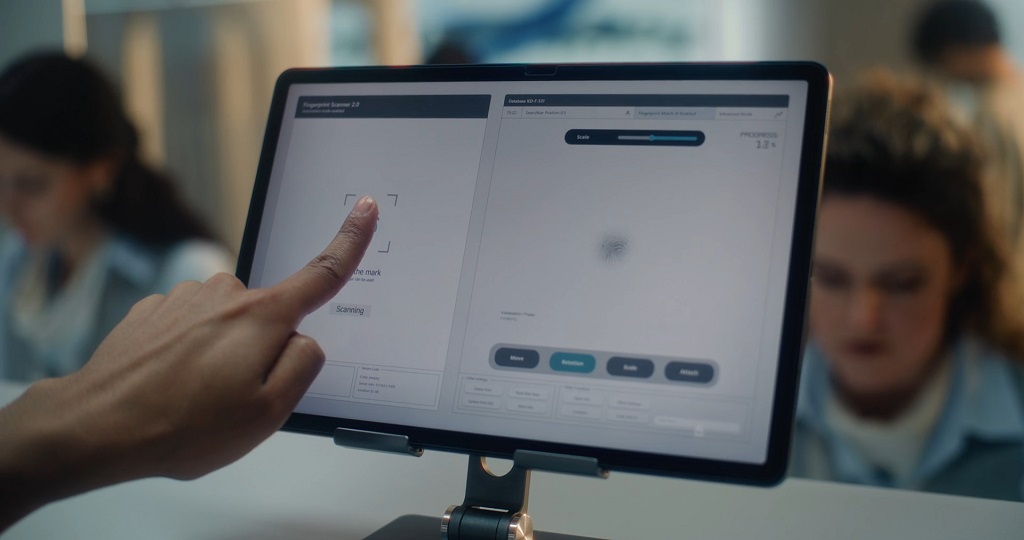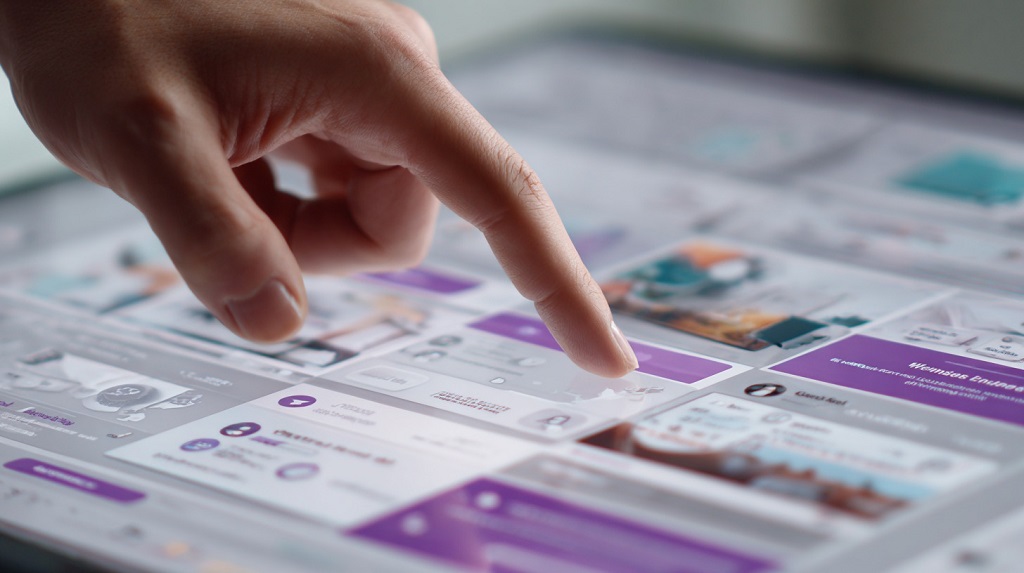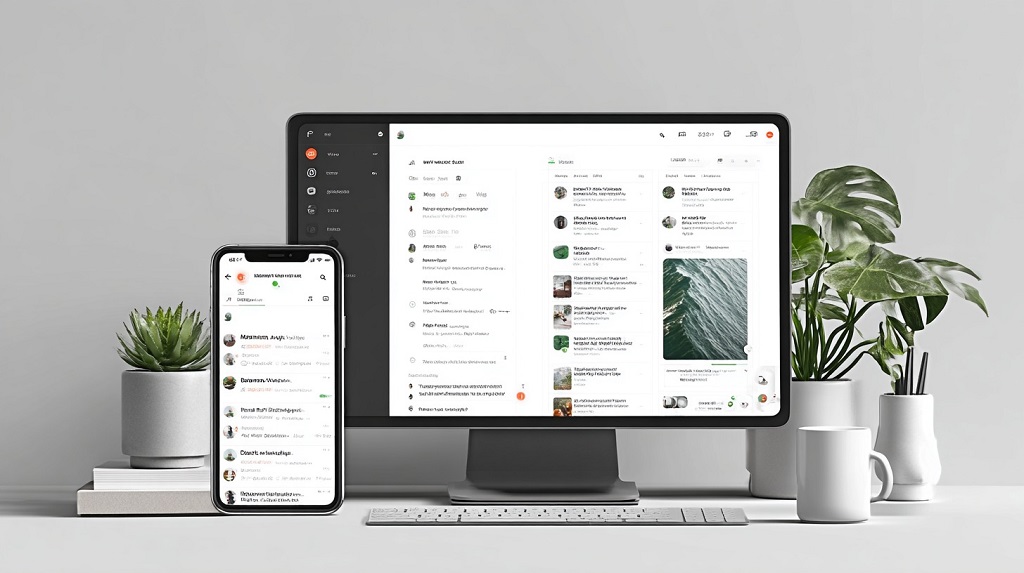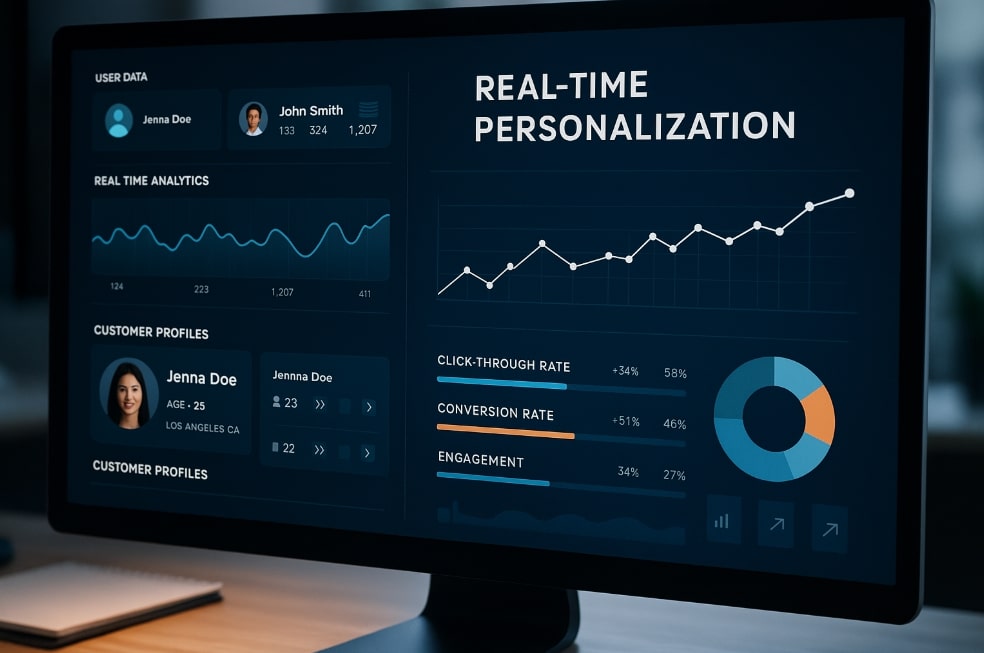Real-time personalization refers to the adaptive presentation of digital interfaces based on user behaviors, preferences, and contextual factors at the moment of interaction.
Users now demand more than generic interfaces. They expect relevant, timely, and predictive features that anticipate their next move. Static experiences no longer satisfy users accustomed to intelligent, fluid environments.
Personalization serves as a core element in enhancing usability. When users are shown relevant content and guided smoothly, friction decreases, and engagement increases.
Tailored interfaces not only satisfy expectations but also drive retention and performance across digital touchpoints.
Foundations of Real-Time Personalization
Personalization at its most effective begins with a deep and structured application of customer data.
Data alone has no value until it’s translated into actionable insights, real-time personalization hinges on how systems interpret signals in the moment and respond accordingly.
Rather than relying on generic, one-size-fits-all approaches, modern digital platforms increasingly use granular data points to craft experiences tailored to each individual user.
Key Drivers of Real-Time Personalization
Digital systems monitor a wide range of signals to make real-time personalization possible. These signals are categorized into behavioral, contextual, and historical layers:
Behavioral signals: These include real-time actions such as:
- Click patterns and button presses
- Time spent on particular pages or sections
- Scroll depth as an indicator of content engagement
- Cart abandonment or hesitancy during checkout
Contextual cues: These offer situational awareness by tracking:
- User demographics like age group, region, or language
- Device type – desktop, tablet, or mobile
- Geographic location
- Time of day and browsing session length
Live and historical merging: Systems synthesize real-time behaviors with past data, such as:
- Purchase history
- Previous site visits and search queries
- Frequency and recency of interactions
- Loyalty or account-level activity
Unified customer profiles: These profiles function as centralized data hubs by:
- Consolidating fragmented data across devices and channels
- Aligning past and present behavior in a consistent record
- Ensuring personalization strategies work cohesively across platforms
Role of Unified Profiles in Seamless Experiences
Creating a consistent experience across touchpoints, whether web, mobile, or app, depends on the accuracy and integrity of unified profiles.
When platforms consolidate scattered data into a single, coherent profile, each interaction builds upon the last.
For instance, a returning visitor who previously browsed winter jackets on a mobile device may instantly see personalized jacket deals on desktop.
Preferences and patterns carry over between channels, reinforcing the feeling that the platform “remembers” the user.
These profiles are not static records. They evolve continuously with every new interaction.
The dynamic nature is what allows systems to shift tone, layout, product recommendations, and even interface structure based on what the user needs now, not yesterday.
Core Features Enhancing Usability
Real-time personalization extends into user interface elements, onboarding flows, navigation systems, and omnichannel communication.
Each feature below supports intuitive interaction and user-centric design.
Dynamic Interface Adaptation
Modern interfaces no longer remain static. They shape themselves according to individual users’ interactions.
Examples of interface adaptation:
- Personalized banners showcasing products viewed seconds earlier
- Tooltips triggered by hesitation or cursor pauses
- UI modules that appear or vanish depending on behavior, role, or location
Returning customers may see product suggestions aligned with previous searches, while new users are greeted with simplified walkthroughs.
Reactions occur in milliseconds, smoothing user progress through complex systems.
Interactive Walkthroughs and Onboarding
Static onboarding flows create friction. Responsive walkthroughs adapt to each user’s pace and behavior.
Key onboarding enhancements:
- Pausing walkthroughs when engagement drops
- Resuming automatically once interaction resumes
- Responsive buttons that increase visibility after repeated clicks
- Language switching based on behavior or location
Step-by-step help no longer needs to feel robotic. Onboarding becomes a fluid process that adjusts in real time, making new feature discovery or product use natural and unobtrusive.
Context-Aware Navigation and Recommendations
Navigation and content recommendations evolve with each click, hover, or scroll.
Examples of responsive recommendation engines:
- “Still Interested?” prompts triggered by return visits or abandoned views
- “Bought Together” sections updated based on cart changes
- Navigation menus that shift depending on user type
First-time users may see educational content, while returning visitors get shortcuts to frequent purchases.
By adjusting entry points, platforms can guide users toward key actions with minimal effort.
Cross-Channel Personalization for Seamless UI
Delivering consistent personalization across platforms ensures continuity.
Experience must not break when moving between mobile, web, app, or communication channels.
Cross-channel synchronization includes:
- Unified product reminders based on desktop browsing sent via mobile notifications
- Channel prediction: Choosing SMS for late-night browsing or push for mobile-first users
- Visual and message consistency between web, app, and email
Content, layout, and tone must align to prevent disjointed transitions. Seamless movement between devices removes barriers, allowing users to continue interactions where they left off. See how this is applied on the Official Soft2Bet LinkedIn page.
Seamless movement between devices removes barriers, allowing users to continue interactions where they left off.
AI and Predictive Personalization Enhancements
Artificial intelligence elevates personalization through ongoing learning and adaptation.
By anticipating user needs and reacting to subtle cues, systems move toward hyper-personalized interaction.
Examples of AI-enhanced personalization:
- Auto-suggestions in search bars based on prior entries
- Dashboards that rearrange widgets based on interaction patterns
- User segmentation into high-value, casual, or at-risk categories
- Feedback loops that adjust future prompts when a user dismisses an offer
Machine learning doesn’t just react, it predicts. Every skipped popup or completed action teaches the system how to do better next time.
Performance Monitoring and Feedback Loops
Personalization without measurement loses direction. Monitoring tools allow continuous refinement based on real-time behavior.
Performance tools include:
- Live analytics showing how users interact with personalized elements
- Click heatmaps that highlight focus areas
- Drop-off tracking to uncover problem steps
A/B testing supports experimentation. Algorithms promote high-performing versions automatically, while underperforming options are sidelined.
Feedback collection channels:
- In-app surveys delivered after key actions
- Micro-polls tied to specific features or product suggestions
Every response feeds back into the system, ensuring that personalization gets smarter, faster, and more accurate over time.
The Bottom Line
Personalization elevates usability by adapting content, layout, and messaging in real-time. Dynamic experiences minimize friction and guide users with confidence.
Emerging technologies like conversational AI, augmented reality interfaces, and predictive analytics will continue to shape personalization in future environments.
Designing systems that think, respond, and evolve alongside users sets a new standard for usability, where every interaction feels personal, timely, and intuitive.





















